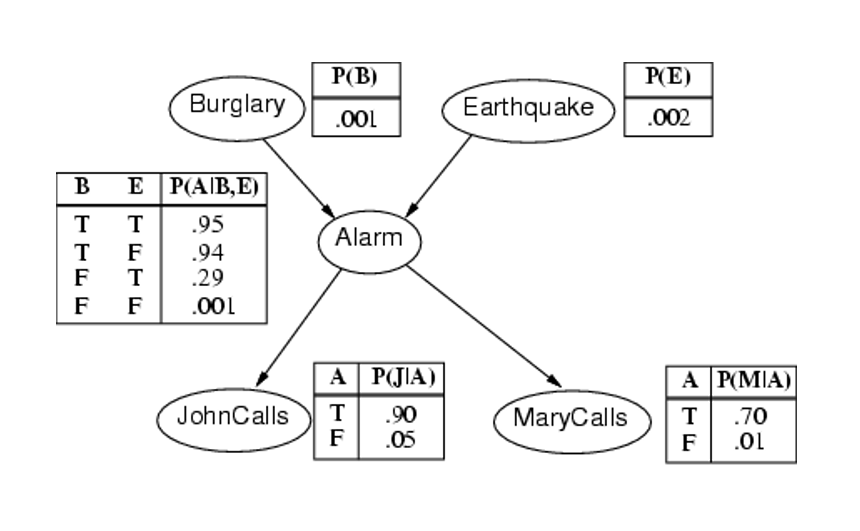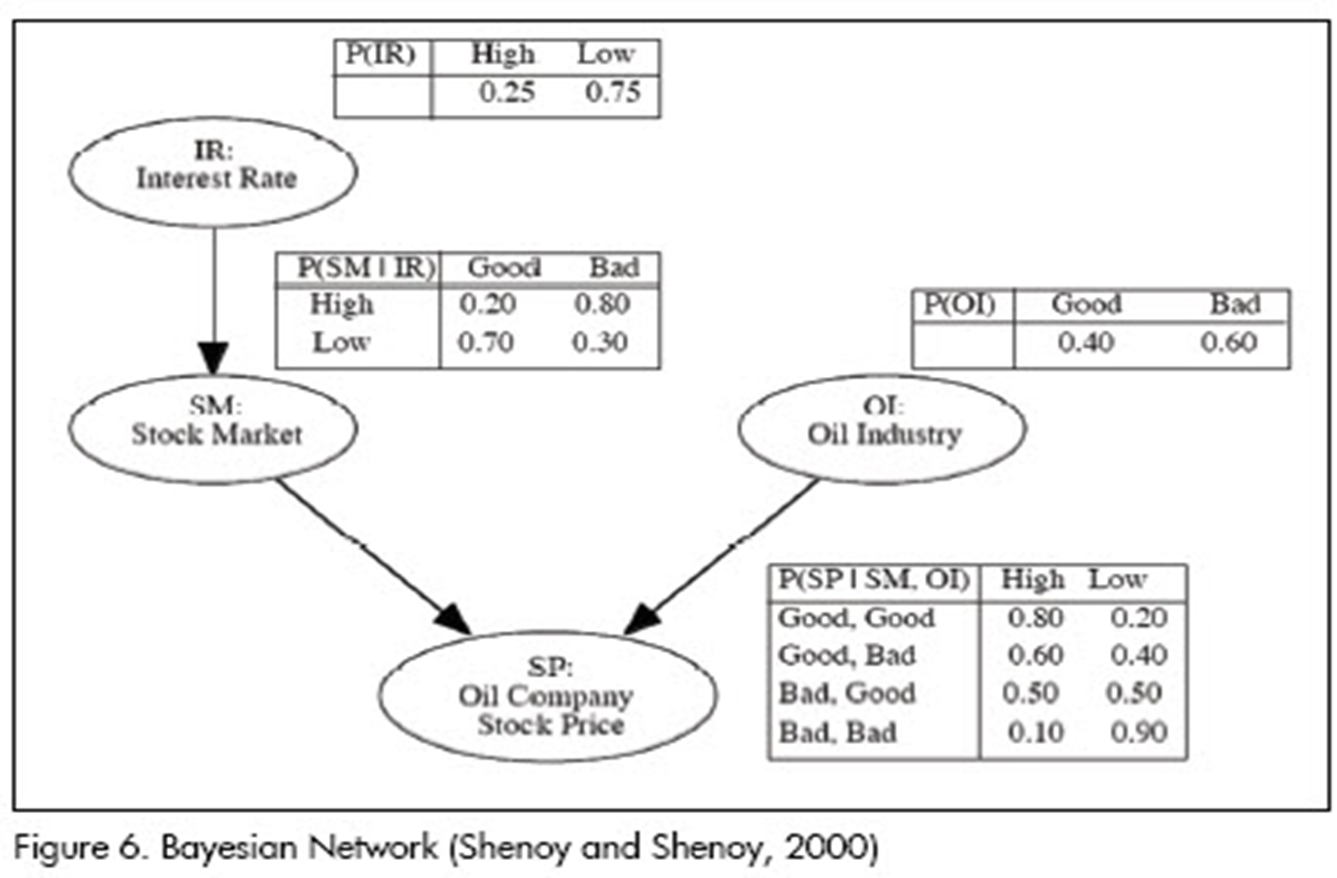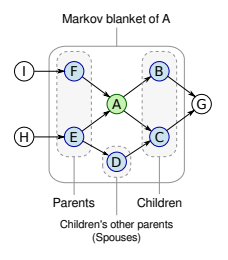 02.Bayesian networks(W3)
02.Bayesian networks(W3)
Bayesian networks: examples, definition
Details


:::
Bayesian networks
What is a BN?
A Bayesian network (BN) is a graphical model for depicting probabilistic relationships among a set of variables.
- BN Encodes the conditional independence relationships between the variables in the graph structure.
- Provides a compact representation of the joint probability distribution over the variables
- A problem domain is modeled by a list of variables
- Knowledge about the problem domain is represented by a joint probability
- Directed links represent causal direct influences
- Each node has a conditional probability table quantifying the effects from the parents.
- No directed cycles
Two important properties of Bayesian Networks
- Encodes the conditional independence relationships between the variables in the graph structure
- Is a compact representation of the joint probability distribution over the variables
What is Markov blanket

The set of nodes that graphically isolates a target node from the rest of the DAG is called its Markov blanket and includes:
- its parents;
- its children;
- other nodes sharing a child.
Since
References
Components of A Bayesian Network
A Bayesian Network is consisted with two components
- A directecd Acyclic Graph
Characteristics
- Each node in the graph is a random variable
- A node X is a parent of another node Y if there is an arrow from node X to node Y
eg. A is a parent of B - Informally, an arrow from node X to node Y means X has a direct influence on Y
- A set of tables for each node in the graph

Characteristics
- Each node
- The parameters are the probabilities in these conditional probability tables (CPTs)
- Each node
Bayesian Network Example
Using the network in the example, suppose you want to calculate:
Details for data refer to here.
Conditional Independence
The Markov condition: Given its parents (P1, P2), a node (X) is conditionally independent of its non-descendants (ND1, ND2).


The Joint Probability Distribution
Due to the Markov condition, we can compute the joint probability distribution over all the variables
Info
Where
Bayesian network inference
Using a Bayesian network to compute probabilities is called inference
In general, inference involves queries of the form:
E: The evidence variable(s)
X: The query variable(s)Diagnostic (evidential, abductive): from effect to cause
- P(Buglary|JonhCalls), P(B|J)=0.016
- P(B|J,M)=0.29
- P(A|J,M)=0.76
Causal (predictive): From cause to effect
- P(J|B)=0.86
- P(M|B)=0.67
Intercausal (explaining away): common effect
- P(B|A)=0.38
- P(B|A, E)=0.003
Mixed: two or more of the above combined
- P(A|J,E’)=0.03
- P(B|J,E’)=0.017
In general, the problem of Bayesian network inference is NP-hard (exponential in the size of the graph)
Exact inference
- Probability and Markov condition
- Variable elimination
- Clustering / join tree algorithms
Approximate inference
- Stochastic simulation / sampling methods
- Markov chain Monte Carlo methods
- Genetic algorithms
- Neural networks
- Simulated annealing
- Mean field theory
Marginalisation:
e.g.Markov condition:
Diagnostic (evidential, abductive): from effect to cause

- Intercausal (explaining away): common effect
Summary
Bayesian networks
- Definition
- Properties: Markov condition, compact joint probability
Bayesian networks inference
- Understand how to use probability theory and Markov condition to do the inference for different types of queries
- In practice, we are going to use R (gRain package)
Next week, learning Bayesian networks from data
References
- Naive Bayes Classifier
Resource from Youtube
- Week 3 Slides from Thuc (SP52023)
